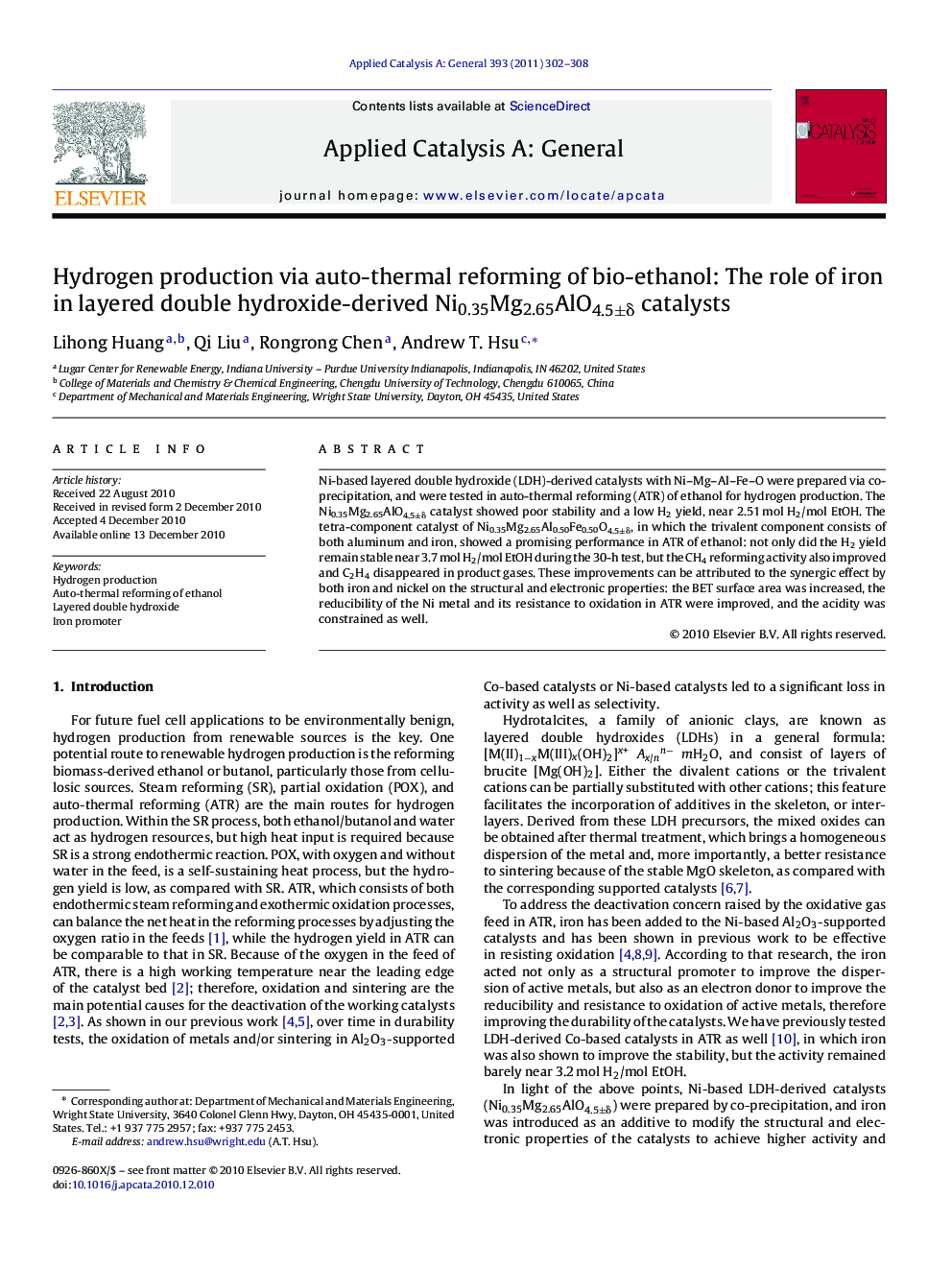| Article ID | Journal | Published Year | Pages | File Type |
|---|---|---|---|---|
| 41770 | Applied Catalysis A: General | 2011 | 7 Pages |
Ni-based layered double hydroxide (LDH)-derived catalysts with Ni–Mg–Al–Fe–O were prepared via co-precipitation, and were tested in auto-thermal reforming (ATR) of ethanol for hydrogen production. The Ni0.35Mg2.65AlO4.5±δ catalyst showed poor stability and a low H2 yield, near 2.51 mol H2/mol EtOH. The tetra-component catalyst of Ni0.35Mg2.65Al0.50Fe0.50O4.5±δ, in which the trivalent component consists of both aluminum and iron, showed a promising performance in ATR of ethanol: not only did the H2 yield remain stable near 3.7 mol H2/mol EtOH during the 30-h test, but the CH4 reforming activity also improved and C2H4 disappeared in product gases. These improvements can be attributed to the synergic effect by both iron and nickel on the structural and electronic properties: the BET surface area was increased, the reducibility of the Ni metal and its resistance to oxidation in ATR were improved, and the acidity was constrained as well.
Graphical abstractNi-based LDH-derived catalysts.Figure optionsDownload full-size imageDownload high-quality image (155 K)Download as PowerPoint slideResearch highlights▶ Iron improves the surface area and the reducibility of Ni, and constrains acidity. ▶ Iron improves the H2 yield and relieves the coke deposition. ▶ Stability obtained in the 30-h ATR test with iron.
